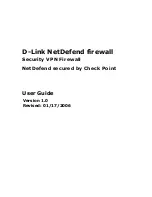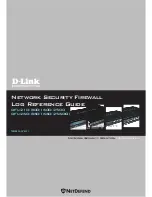
38-106
Cisco Catalyst Blade Switch 3130 and 3032 for Dell Software Configuration Guide
OL-12247-04
Chapter 38 Configuring IP Unicast Routing
Configuring Protocol-Independent Features
Filtering Sources of Routing Information
Because some routing information might be more accurate than others, you can use filtering to prioritize
information coming from different sources. An
administrative distance
is a rating of the trustworthiness
of a routing information source, such as a router or group of routers. In a large network, some routing
protocols can be more reliable than others. By specifying administrative distance values, you enable the
router to intelligently discriminate between sources of routing information. The router always picks the
route whose routing protocol has the lowest administrative distance.
shows
the default administrative distances for various routing information sources.
Because each network has its own requirements, there are no general guidelines for assigning
administrative distances.
Beginning in privileged EXEC mode, follow these steps to filter sources of routing information:
To remove a distance definition, use the
no distance
router configuration command.
Managing Authentication Keys
Key management is a method of controlling authentication keys used by routing protocols. Not all
protocols can use key management. Authentication keys are available for EIGRP and RIP Version 2.
Before you manage authentication keys, you must enable authentication. See the appropriate protocol
section to see how to enable authentication for that protocol. To manage authentication keys, define a
key chain, identify the keys that belong to the key chain, and specify how long each key is valid. Each
key has its own key identifier (specified with the
key
number
key chain configuration command), which
is stored locally. The combination of the key identifier and the interface associated with the message
uniquely identifies the authentication algorithm and Message Digest 5 (MD5) authentication key in use.
Command
Purpose
Step 1
configure terminal
Enter global configuration mode.
Step 2
router
{
bgp
|
rip
|
ospf
|
eigrp
}
Enter router configuration mode.
A switch running the IP base feature set supports only
the
rip
keyword.
Step 3
distance
weight
{
ip-address
{
ip-address mask
}}
[
ip access list
]
Define an administrative distance.
weight
—The administrative distance as an integer from
10 to 255. Used alone,
weight
specifies a default
administrative distance that is used when no other
specification exists for a routing information source.
Routes with a distance of 255 are not installed in the
routing table.
(Optional)
ip access list
—An IP standard or extended
access list to be applied to incoming routing updates.
Step 4
end
Return to privileged EXEC mode.
Step 5
show ip protocols
Display the default administrative distance for a
specified routing process.
Step 6
copy running-config startup-config
(Optional) Save your entries in the configuration file.









































